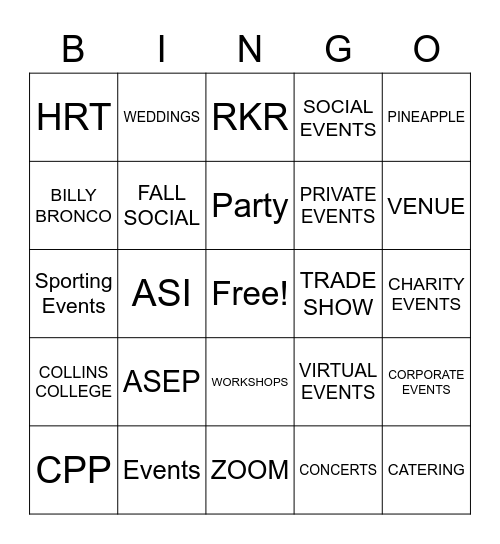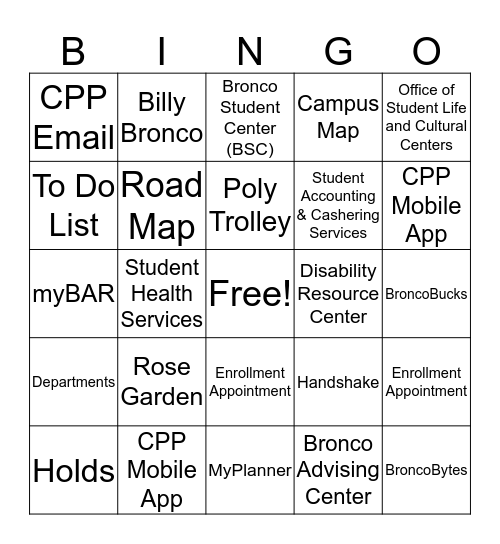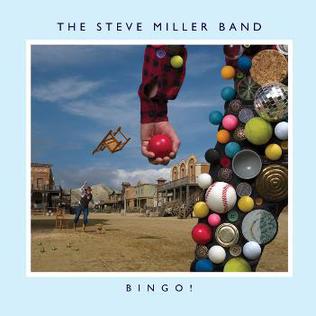Bronco Billy Bingo
Anderson c. 1913 | |
| Born | March 21, 1880 Little Rock, Arkansas, U.S. |
|---|---|
| Died | January 20, 1971 (aged 90) |
| Other names | Gilbert M. Anderson |
| Occupation |
|
| Years active | 1903–65 |
| Spouse(s) | Mollie Louise Schabbleman (1910–71; his death; 1 child) |
| Relatives | Leona Anderson (sister) |
Gilbert M. 'Broncho Billy' Anderson (March 21, 1880 – January 20, 1971) was an American actor, writer, film director, and film producer, who is best known as the first star of the Western film genre.[1] He was a founder and star for Essanay studios. In 1958, he received a special Academy Award for being a pioneer of the movie industry.
Early life[edit]
Anderson was born Maxwell Henry Aronson[2] in Little Rock, Arkansas,[3] the sixth child of Henry and Esther (Ash) Aronson, both natives of New York.[4][5][6] His younger sister was actress and singer Leona Anderson.[7] His family was Jewish, his father's parents having emigrated to the United States from Prussia, and his mother's from the Russian Empire.[8] His family moved to Pine Bluff, Arkansas when he was three years old. He lived in Pine Bluff until he was 8, when he moved with his family to St. Louis, Missouri. When he was 18, he moved to New York City and appeared in vaudeville and the theater, supplementing his income as a photographer's model and newspaper vendor. In 1903, he met Edwin S. Porter, who hired him as an actor and occasional script collaborator.[9][10]
Film[edit]
- All of us serious daubers love free bingo games, and Bingo Billy has just what you need in the Wild Penny Room; free online bingo 24 hours a day, 7 days a week! There are no card costs because it's free bingo, at its best. If you're a depositing member you also have the choice of playing in the Green Room, where more free bingo games await you.
- If playback doesn't begin shortly, try restarting your device. Autoplay is paused. You're signed out. Videos you watch may be added to the TV's watch.
Anderson played three roles in Porter's early motion pictureThe Great Train Robbery (1903). Seeing the film for the first time at a vaudeville theater and being overwhelmed by the audience's reaction, he decided to work in the film industry exclusively. He began to write, direct, and act in his own westerns under the name Gilbert M. Anderson.
In 1907 in Chicago, Anderson and George Kirke Spoor founded Essanay Studios ('S and A' for Spoor and Anderson), one of the major early movie studios. In 1909, he directed the film with the first known instance of the pie-the-face gag, Mr. Flip. Anderson acted in over 300 short films. He played a wide variety of characters, but he gained enormous popularity from a series of 148 silent western shorts and was the first film cowboy star, 'Broncho Billy.'[11] Spoor stayed in Chicago running the company like a factory, while Anderson traveled the western United States by train with a film crew shooting movies. Many of these were shot in Niles, a small town in Alameda County, California, south-east of San Francisco, where the nearby Western Pacific Railroad route through Niles Canyon proved to be a very suitable location for the filming of Westerns.
Bronco Billy's is a sports bar themed casino in all aspects yet fits in well in Cripple Creek. It was opened on October 1st 1991 and was one of the 'original' Cripple Creek casinos. If you need an affordable place to stay, Bronco Billy's.
Writing, acting, and directing most of these movies, Anderson also found time to direct a series of 'Alkali Ike' comedy westerns starring Augustus Carney. In 1916, Anderson sold his ownership in Essanay and retired from acting. He returned to New York City, bought the Longacre Theatre and produced plays, but without permanent success. He then made a brief comeback as a producer with a series of shorts with Stan Laurel, including his first work with Oliver Hardy in A Lucky Dog (filmed in 1919, released in 1921). Conflicts with the studio, Metro, led him to retire again after 1920.
Anderson sued Paramount Pictures for naming a character 'Bronco Billy' in Star Spangled Rhythm (1943) and for depicting the character as a 'washed-up and broken-down actor,' which he felt reflected badly on him. He asked for $900,000, but the outcome of the suit is unknown.[12]
Anderson resumed producing movies, as owner of Progressive Pictures, into the 1950s, then retired again. In 1958, he received an HonoraryAcademy Award as a 'motion picture pioneer' for his 'contributions to the development of motion pictures as entertainment.'
At age 85, Anderson came out of retirement for a cameo role in The Bounty Killer (1965). For the last years of his life, he lived at the Motion Picture & Television Country House and Hospital in Woodland Hills, California.[13]
Death[edit]
Anderson died in 1971 at the age of 90, at a sanitarium in South Pasadena, California.[14] He was survived by his wife, Mollie Louise (Schabbleman) Anderson, their daughter, Maxine, and his sister Leona Anderson (1884–1973). He was cremated and his ashes placed in a vault at the Chapel of the Pines Crematory in Los Angeles.
Legacy[edit]
Anderson was honored posthumously in 1998 with his image on a U.S. postage stamp. In 2002, he was inducted into the Western Performers Hall of Fame at the National Cowboy & Western Heritage Museum in Oklahoma City, Oklahoma. For the past nine years, Niles (now part of Fremont), California, site of the western Essanay Studios, has held an annual 'Broncho Billy Silent Film Festival.'[15]
Anderson has a motion pictures star on the Hollywood Walk of Fame at 1651 Vine Street in Hollywood.[16]
A Chicago Park District park, not far from the site of the Chicago Essanay Studio lot, was named Broncho Billy Park in his honor.[17]
On March 21, 2018, a historical roadside marker was dedicated in Little Rock, Arkansas, across the street from his birthplace, 713 Center Street. The marker was donated by the Jewish American Society for Historic Preservation in cooperation with the Niles Essanay Silent Film Museum and First United Methodist Church (Little Rock, Arkansas).[citation needed]
See also[edit]
- San Francisco Sunday Examiner & Chronicle, September 21, 1980, magazine section p. 54, about Essanay (Spoor & Aronson) studios at Niles, California
- The Resurrection of Broncho Billy, a 1970 live action short Western
References[edit]
- ^'Bronco Billy Anderson is Dead at 88'. The New York Times. January 21, 1971.
- ^Essanay Silent Film Museum - AKA Gilbert Maxwell Aronson
- ^''Broncho Billy' Anderson'. Encyclopedia of Arkansas. Retrieved January 17, 2019.
- ^Aronson in the United States Federal Census, Pulaski County, Arkansas, 1880, Enumeration District 143, p. 303.
- ^''Broncho Billy' Anderson'. Encyclopedia of Arkansas. Retrieved January 17, 2019.
- ^'Ancestry of Gilbert M. 'Broncho Billy' Anderson (1880-1971)'. Freepages.genealogy.rootsweb.ancestry.com. January 20, 1971. Archived from the original on July 18, 2013. Retrieved January 17, 2019.
- ^'Staff Directory'. Essanay Studios. Archived from the original on February 11, 2015. Retrieved March 7, 2015.
- ^Kehr, Dave (January 16, 2000). 'Sring Films / Actors-Directors; The Actors Who Have Two Faces'. The New York Times. Retrieved February 23, 2015.
- ^Corneau, Ernest N. The Hall of Fame of Western Film Stars. Christopher Publishing House, 1969, p. 23.
- ^Katz, Ephraim. The Film Encyclopedia, 5th Ed. New York City: Harper Collins, 2005. pp. 35-36.
- ^Kiehn, David. (2003). Broncho Billy and the Essanay Film Company. Berkeley, Calif: Farwell Books. ISBN0-9729226-5-2., p. 162.
- ^Star Spangled Rhythm ('Notes') at the TCM Movie Database
- ^Corneau, Ernest N. The Hall of Fame of Western Film Stars. Christopher Publishing House, 1969, p. 24.
- ^Los Angeles Times, January 21, 1971, Section 1, p. 2.
- ^Broncho Billy Silent Film FestivalArchived June 16, 2006, at the Wayback Machine
- ^Hollywood Chamber of Commerce
- ^http://www.chicagoparkdistrict.com/parks/Broncho-Billy-Playlot-Park/
External links[edit]

| Wikimedia Commons has media related to Broncho Billy Anderson. |
- Broncho Billy Anderson at IMDb
- Broncho Billy Anderson at the Internet Broadway Database
- Broncho Billy Anderson at AllMovie
- 'Broncho Billy Anderson'. Find a Grave. Retrieved August 10, 2018.
| Bronco Billy | |
|---|---|
| Directed by | Clint Eastwood |
| Produced by |
|
| Written by | Dennis Hackin |
| Starring | |
| Music by | Snuff Garrett |
| Cinematography | David Worth |
| Edited by | |
| Distributed by | Warner Bros. |
| June 11, 1980 | |
Running time | 116 minutes |
| Country | United States |
| Language | English |
| Budget | $6.5 million[1][2] |
| Box office | $24,265,583 (domestic)[3] |
Bronco Billy is a 1980 American Western film starring Clint Eastwood and Sondra Locke. It was directed by Eastwood and written by Dennis Hackin.
Plot[edit]
A traveling show reminiscent of Buffalo Bill's, 'Bronco Billy's Wild West Show' is a rundown traveling circus, the star of which is Bronco Billy McCoy (Clint Eastwood), the 'fastest gun in the West.' For the show's finale, a blindfolded Bronco Billy shoots balloons around a female assistant on a revolving wooden disc, and for the last balloon, he throws a knife. However, the assistant moves her leg and is nicked, so she quits. The show is not making any money, and nobody has been paid for six months.
The show moves on to a new town and Bronco Billy goes to city hall to get a permit. He bumps into Antoinette Lily (Sondra Locke) and John Arlington (Geoffrey Lewis), who are there to be married. Antoinette despises her future husband, but has to marry before she is thirty in order to inherit a large fortune. Their car breaks down at the motel opposite the Wild West Show. The next morning, Arlington steals all her money and their repaired car. She is left to fend for herself.

Bronco Billy talks Antoinette into becoming his new assistant, 'Miss Lily,' though she only agrees to do one show. Her first performance is unusually successful, although Miss Lily irritates Billy by not sticking to the script.
Antoinette discovers that Arlington has been arrested for her murder (framed by Antoinette's stepmother and her scheming lawyer friend, who stand to gain her inheritance). Seizing the chance to get even with Arlington, Antoinette rejoins the Wild West Show.
She learns that no one is a real cowboy: they are mostly ex-convicts, or alcoholics, or both. Bronco Billy was a shoe salesman from New Jersey who shot his wife for sleeping with his best friend. Nevertheless, Miss Lily begins to warm to the troupe.
Two of the show's performers announce that they are going to have a baby. The crew goes to a bar to celebrate. One gets arrested by police who discover that he is a deserter from the Army. Bronco Billy uses the show's meager savings to bribe the sheriff into letting the man go, swallowing his pride and enduring the sheriff's verbal humiliations for his friend's sake.
Bronco Billy Bingo Cards
Then the circus tent burns down. Everyone blames Miss Lily for their bad luck, but Bronco Billy defends her and proposes that they rob a train. They try to do this in the standard Western way (riding alongside and jumping on), but a modern train proves to be resistant to such an approach and they give up.
Next, the troupe travels to a mental institution at which they have previously performed pro bono. The head of the institution, who is obsessed with the Wild West, agrees to provide them with accommodation and to supply a new tent, and the inmates sew one out of American flags. Miss Lily and Bronco Billy spend the night together. By chance, one inmate turns out to be Arlington (he had been paid by the crooked lawyer to confess to being mentally disturbed when he 'murdered' Antoinette). When he sees her, he raises a fuss and gets released. Bronco Billy and the show depart without Miss Lily.
Antoinette returns to a luxurious lifestyle, but she is bored and misses Billy, who drowns his loneliness with alcohol. When Bronco Billy is about to introduce Lefty as his assistant, Miss Lily appears. The show, now a raving success, runs smoothly and Bronco Billy ends it with a positive message for the children in the audience.
Cast[edit]
- Clint Eastwood as 'Bronco' Billy McCoy
- Sondra Locke as Antoinette Lily
- Geoffrey Lewis as John Arlington
- Scatman Crothers as Doc Lynch
- Bill McKinney as Lefty LeBow
- Sam Bottoms as Leonard James
- Dan Vadis as Chief Big Eagle
- Sierra Pecheur as Lorraine Running Water
- Walter Barnes as Sheriff Dix
- Woodrow Parfrey as Dr. Canterbury
- Beverlee McKinsey as Irene Lily
- Doug McGrath as Lt. Wiecker
- Hank Worden as Station Mechanic
- Tessa Richarde as Miss Mitzy
- William Prince as Edgar Lipton
Production[edit]
Eastwood received Dennis E. Hackin and Neal Dobrofsky's script and decided to join the film with Sondra Locke.[4] The film was shot in two months in the Boise, Idaho area in the fall of 1979.[5] Additional filming took place in easternOregon and New York.[4] Filmed on a low budget of $5 million, it finished two to four weeks ahead of schedule.[6][7]
Critical reception[edit]
Bronco Billy Oatmeal
Eastwood has cited Bronco Billy as being one of the most affable shoots of his career, and biographer Richard Schickel has argued that the character of Bronco Billy is his most self-referential work.[8][9] The film was a modest commercial hit,[10] but was appreciated by critics. Janet Maslin of The New York Times believed the film was 'the best and funniest Clint Eastwood movie in quite a while,' praising Eastwood's directing and the way he intricately juxtaposes the old West and the new.[11]
Box office performance[edit]
Although the film grossed 4-5 times its cost (some $25 million) during its United States theatrical release, Eastwood considered it insufficient.[12] In a French interview, Eastwood spoke about the film's financial reception, 'It was an old-fashioned theme, probably too old fashioned since the film didn't do as well as we hoped. But if, as a film director, I ever wanted to say something, you'll find it in Bronco Billy.'[12]
Awards and nominations[edit]
- Nominated:Worst Actress (Sondra Locke)
See also[edit]
References[edit]
- ^Gentry, p.63
- ^Theater Owners Blame Box Office Blues This Summer on Lower Quality of Movies Wall Street Journal 8 July 1980: 15.
- ^Bronco Billy Box Office Mojo. Retrieved 24 February 2020.
- ^ abHughes, p.122
- ^'Eastwood and crew begin 'Bronco Billy''. Spokane Daily Chronicle. Washington. Associated Press. October 3, 1979. p. 3.
- ^Schickel, Richard (1996). Clint Eastwood: A Biography. New York: Knopf. p. 361. ISBN978-0-679-42974-6.
- ^McGilligan, Patrick (1999). Clint: The Life and Legend. London: Harper Collins. p. 318. ISBN0-00-638354-8.
- ^Schickel, Richard (1996). Clint Eastwood: A Biography. New York: Knopf. p. 362. ISBN978-0-679-42974-6.
- ^Schickel, Richard (1996). Clint Eastwood: A Biography. New York: Knopf. p. 365. ISBN978-0-679-42974-6.
- ^Maslin, Janet (December 17, 1980). 'Any Which Way You Can (1980): Screen: Clint and Clyde'. The New York Times.
- ^Maslin, Janet (June 11, 1980). 'Bronco Billy (1980):Eastwood Stars and Directs 'Bronco Billy''. The New York Times.
- ^ abHughes, p.124
Bibliography[edit]
- Hughes, Howard (2009). Aim for the Heart. London: I.B. Tauris. ISBN978-1-84511-902-7.
- Gentry, Ric (1999). 'Director Clint Eastwood: Attention to Detail and Involvement for the Audience'. In Robert E., Kapsis; Coblentz, Kathie (ed.). Clint Eastwood: Interviews. University Press of Mississippi. pp. 62–75. ISBN1-57806-070-2.
Bronco Billy Bingo Show
External links[edit]
- Bronco Billy at IMDb
- Bronco Billy at AllMovie
- Bronco Billy at Box Office Mojo
- Bronco Billy at Rotten Tomatoes
Bronco Billy Bingo Song

Bronco Billy online, free
